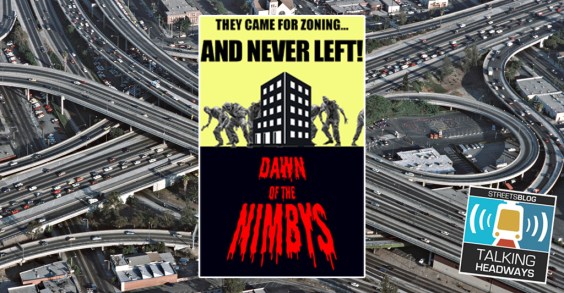 Flickr photo: kuronakko
Flickr photo: kuronakkoSamTrans - the buses and paratransit vehicles that run the length of El Camino Real between Palo Alto and Daly City, traverse the Santa Cruz mountains, and service San Francisco's financial district - is preparing to raise fares and reduce service on some bus lines and eliminate other lines in order to close a $28.4 million budget gap.
SamTrans serves more than 15 million riders annually through its 339 regular buses and its Redi-Wheels and RediCoast (Paratransit) vehicles. Its fixed-route bus system currently consists of 54 routes.
The financial crisis forced SamTrans Deputy CEO Chuck Harvey to present several options to close the gap at a San Mateo County Transit District Board of Directors meeting August 12 and arrive at a preliminary operating budget of $136.5 million for the 2010 fiscal year.
Harvey presented options for achieving 7.5 percent, 10 percent, and 15 percent savings.
"To get to 15 percent savings, it's wholesale amputation," he said.
To achieve 15 percent savings Harvey proposed: reducing service on up to 22 lines and eliminating 17 lines; increasing adult, youth, and discounted fares by 25 cents or more; and eliminating the 15 percent discount on the SamTrans pass with the purchase of a Muni sticker.
"It is indeed a cruel twist of fate that brings us here today," said Board of Directors Chairwoman Zoe Kersteen-Tucker. "More than ever, we need to reduce our dependence on cars, yet we are facing a significant crushing deficit, and we cannot look to the state to help us out at least for the next four years."
Citizens argued for the retention of affordable fares and the routes they depend on.
Laura Loringer, a disabled bus rider, testified on behalf of herself and other disabled riders, urging SamTrans not to raise fares for the disabled. "Some of us are on fixed incomes," she said.
"What is Schwarzenegger doing to us?" asked William Farrell, another disabled rider. "We need these buses. For the love of God, make the right choices."
The current cost of a discounted monthly pass is $22. The proposed cost is $32.
The transit agency's budget problem has also been compounded by the loss of
$39.2 million from the State Transit Assistance fund, which was gutted
by Governor Schwarzenegger and the Legislature.
Other members of the public testified on behalf of public school students and community college students who depend on the buses to get their schools or out of concern for the environment.
"The express bus service is one of the most effective methods for improving air quality," testified Amir Fanai, a San Mateo County resident. For four years, Fanai has been taking the NX express bus from Redwood Shores to his job with the Bay Area Air Quality Management District in San Francisco, but the NX is now on the chopping block. "By eliminating the NX, many fellow passengers would have to drive," he said.
Fanai has also written to President Barack Obama asking that stimulus money be released for the operational costs of transit agencies.
According to Randy Rentschler, spokesperson for the Metropolitan Transportation Commission, the Bay Area has received a total of about $500 million in transportation stimulus dollars, $340 million of which has gone to transit. According to SamTrans Public Information Officer Christine Dunn, SamTrans received $7.8 million. Three million of that has been set aside for new buses, $4 million for maintenance, and $788,000 for paratransit buses - and none of those monies have been directly put into operations.
Michael Dolder, interim city manager for Half Moon Bay, questioned whether or not the agency had complied with the California Environmental Quality Act and the MTC Regional Transportation Plan 2035. Dolder was particularly concerned about proposals to eliminate the 17 line which runs between Montara State Beach and Santa Cruz, and is one of only two lines to serve the coast side of San Mateo County south of Pacifica.
"After a thorough review," he wrote in a letter to the Board of Directors, "staff has concluded that the document does not provide sufficient factual and scientific data to support the decision to adopt a negative declaration for this project."
However, BART Board Director and Livably City Executive Director Tom Radulovich said CEQA "is a strange document" and "not a very good planning tool if you're trying to plan for sustainability."
CEQA, he noted, is weak in terms of the evaluation of carbon dioxide emissions, and performance for transit riders, and it permits exemptions for transit agencies that declare fiscal emergencies such as the San Mateo County Transit District and the San Francisco Municipal Transportation Agency (Muni).
The public can submit comments to the SamTrans Board of Directors until September 2 at changes@samtrans.com.





